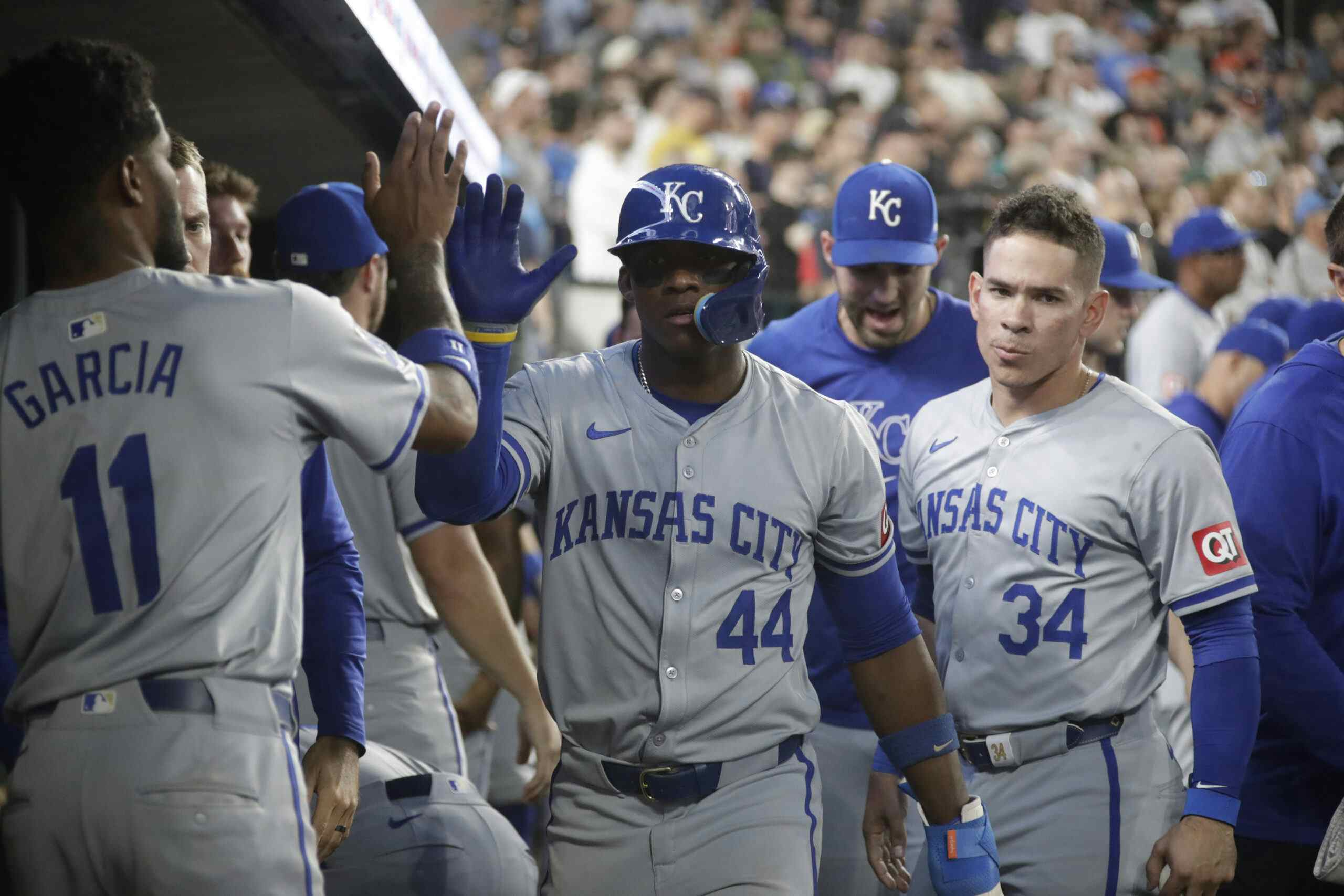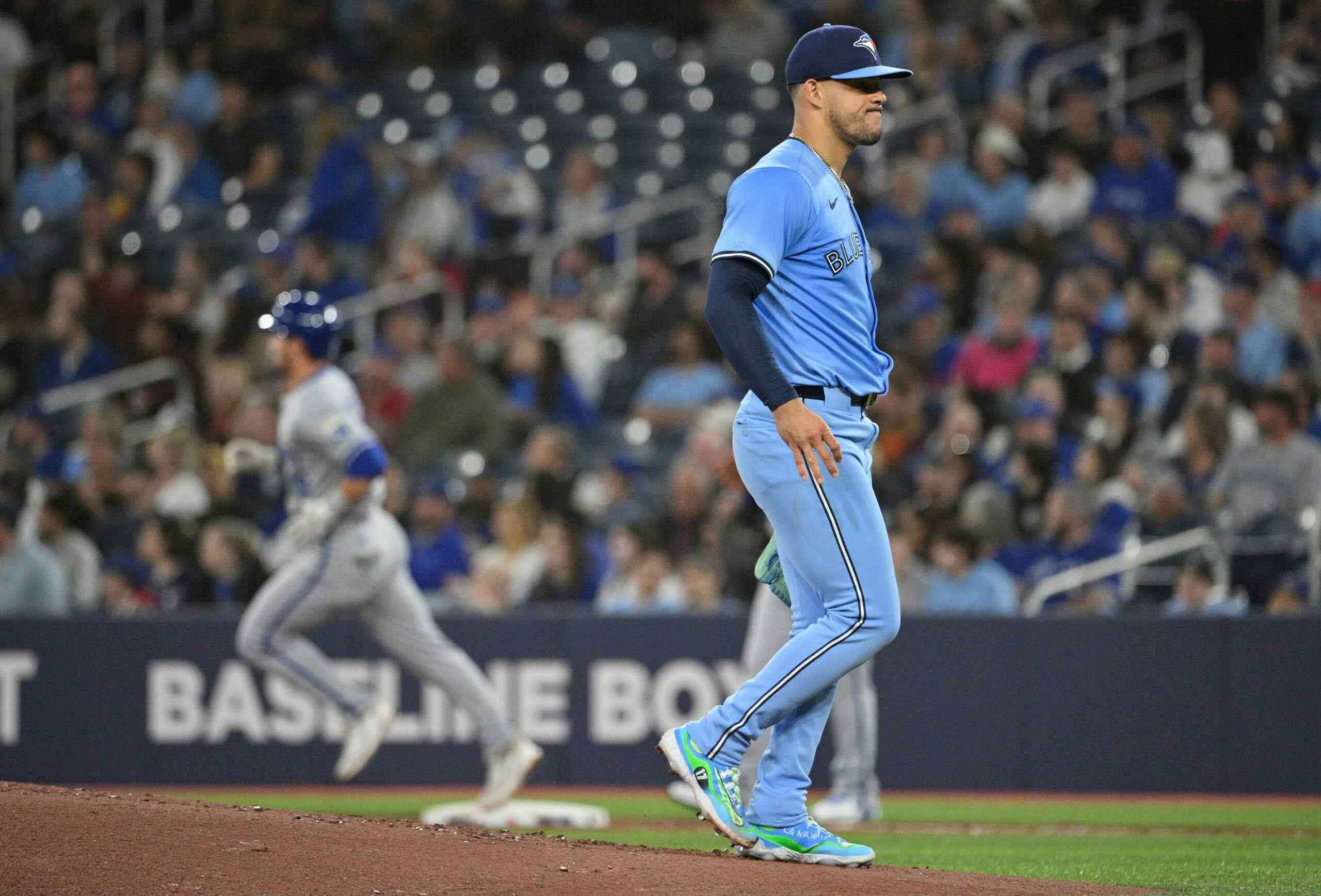What Makes Danny Jansen’s Bounce Back Different?

By Gideon Turk
4 years agoAfter earning a promotion to the big league club last season, all Danny Jansen did was rake, hitting a robust .247/.347/.432 in 95 plate appearances to go along with positive framing behind the plate, all leading up to him being worth 0.9 fWAR. Those numbers rightfully led people to believe Jansen could be one of the few bright spots on the 2019 version of the Blue Jays, and finally break the curse of the catcher of the future. However, things appeared to go awry early this season, with Jansen’s OPS sitting 17 points below .500 through May 31st!
But that OPS didn’t tell the whole story, because throughout all of his struggles, Jansen was still taking walks at an above average rate of 9.0%. He also was hitting the ball hard, as the chart shows below:
| Exit Velocity | Hit95+% | Launch Angle | LA10-30% | BABIP | wOBA | |
| Danny Jansen | 88.8 | 0.435 | 6.2 | 0.247 | 0.209 | 0.219 |
| MLB Average | 89.2 | 0.407 | 11.6 | 0.309 | 0.294 | 0.318 |
Those numbers are for all games until May 31st. You can see that his exit velocity was pretty close to league average, and the percentage of balls he hit that were above 95 MPH was actually above league average by a fair amount. The numbers that stand out are the launch angle and percentage of batted balls with a LA within the 10-30 degree range. He was far below the league average in both of those aspects, which explains the last two numbers, his BABIP at .209 and wOBA at .219. His batted balls weren’t falling for hits because they weren’t falling at all! He was hitting too many balls into the ground, albeit at a high speed, making it much easier for fielders to make the play and retire him. His GB/FB was .88 during that time period, compared to the .78 that represented the MLB average. Hitting the ball into the ground is no longer the path to success in MLB, and if Jansen was going to start to perform better, the ball was going to need to start leaving the bat with a more flyable oriented path.
When a player is still seeing the ball well and taking walks, but just isn’t getting the result off the bat correctly, it stands to reason that the correction would be pretty simple. Eventually that BABIP was going to stabilize, and with a few swing adjustments, the ball would start to leave Jansen’s bat at a better angle. Combine that with the exit velocity that never left, and of course Jansen was going to be better than his basic statistics showed. And since June 1st, all of that has happened.
His exit velocity has remained virtually unchanged at 90.9 MPH, but his average LA has changed dramatically, sitting at 16.0 degrees in the 20 games he has played. His LA10-30% is still a bit below league average at .278, but that is more than made up for by his Hit95+%, which is a sky high .519. All of this has led him to a more believable BABIP of .264, and a wOBA of .338, certainly more in line with pre-season projections and expectations of the fans. Just like while he was struggling, his BB% has stayed consistent at 9.7%, and I believe that is what makes his bounce back unique.
I’m a lot more likely to believe players like Jansen are going to make a turnaround than players like Brandon Drury or Billy McKinney, both players who have struggled throughout this season and haven’t shown the same plate discipline as Jansen in the past. I imagine internal projection systems are similar. I poke fun of this front office often for their incessant talk about process and outcomes, but they do have a point. Nobody would say that Jansen had poor at bats in the first two months of the seasons, but that’s clearly not the case for the other two batters.
Despite Jansen’s poor outcomes outlined above, his process was still good, unlike Drury and McKinney. That makes the transition to success a lot easier. At least when you walk like Jansen, and make contact with the pitches you are swinging at, something is going right in your game, and you’re contributing to the offense in some way. Maybe not so shockingly, Drury (71.9%) and McKinney (76.2%) are well below league average in making contact with pitches they swing at. Combine that with not talking, and it’s hard to help the team score runs. Bad process and bat outcomes.
It’s possible that Drury or McKinney will turn it around at some point, but McKinney has already been back and forth between Buffalo and Toronto because his time has seemingly run out and he has been passed over on the depth chart. For Drury, his time to be sent down is quickly approaching, and with Cavan Biggio having success at the big league level, he too has been passed over on the depth chart. It’s likely too little too late for these two players, and that’s what happens when both the process and outcome are bad. When Jansen wasn’t performing, nobody was talking about sending him down. Next time he struggles, I imagine it’ll be more of the same, because he’s shown the ability to not get down on his ability and to let his pure talent shine through his outs.
All stats accurate as of game time on July 3rd.
Recent articles from Gideon Turk





